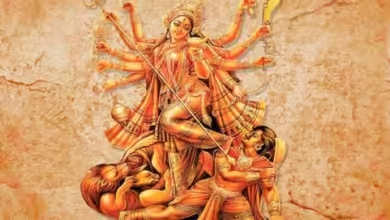The Legend of Sarkata Bhoot (Headless Ghost) of Uttarakhand, India

The tale of Sarkata Bhoot is one of those chilling stories that have become an integral part of Lansdowne’s folklore, a town nestled in the serene hills of Uttarakhand. Lansdowne, with its mist-covered forests and old colonial-era buildings, provides the perfect backdrop for such a ghostly legend.
The story dates back to the early 20th century, a time when Lansdowne was an important cantonment of the British Indian Army. The protagonist of this tale is a British Army officer named W.H. Wardell, who was stationed in Lansdowne during this period. Known for his stern demeanor and dedication to his duty, Wardell was well-respected among his peers.
In 1914, World War I broke out, and many officers, including Wardell, were called to serve on the frontlines in Europe. Wardell was deployed to France, where he fought valiantly. However, the war claimed many lives, and Wardell was one of the unfortunate ones. He met his untimely end on the battlefield, far away from the hills of Lansdowne. His body, like many others who died in the chaos of war, was never recovered.
This lack of closure gave rise to the legend of Sarkata Bhoot. The locals believe that Wardell’s restless spirit, unable to find peace due to his unceremonious death and the absence of a proper burial, returned to Lansdowne. His ghost is said to haunt the cantonment area, where he once walked with authority.
The name Sarkata Bhoot translates to “Headless Ghost.” This eerie moniker comes from the belief that Wardell’s ghost is often seen without his head, a symbol of his body’s loss during the war. Some variations of the story suggest that his head was severed in battle, while others claim that the headless apparition is simply a manifestation of his tragic end, symbolizing the loss of identity and peace.
Locals recount tales of sightings, especially on foggy nights when the town is shrouded in an eerie silence. They say that the Sarkata Bhoot can be seen riding a white horse through the deserted streets of the cantonment, his decapitated figure casting a terrifying shadow in the moonlight. The horse’s hooves make no sound, and those who encounter this spectral figure often describe a deep sense of dread and an overwhelming chill in the air.
Some versions of the story add another layer of horror, stating that those who meet the gaze of the Sarkata Bhoot are doomed to a fate similar to Wardell’s—lost and wandering, never to find peace. As a result, the cantonment area is avoided by locals after dark, especially during the winter months when the mists are thick and the atmosphere is ripe for an encounter with the supernatural.
Despite the fear it instills, the tale of Sarkata Bhoot has become a part of Lansdowne’s cultural fabric. It’s a story often told around campfires and in hushed tones during family gatherings, especially when the fog rolls in and the air grows cold. For the people of Lansdowne, the Sarkata Bhoot is not just a ghost story; it’s a reminder of the town’s colonial past and the lingering spirits of those who never truly left.
Cinematic Adaptation
Stree 2, the highly anticipated sequel to the 2018 blockbuster Stree, has captivated audiences with its blend of horror and comedy, while also drawing inspiration from real-life folklore. Central to the film’s narrative is the character of Sarkata Bhoot, a headless ghost rooted in the chilling legend of Lansdowne, Uttarakhand.
While the filmmakers have not explicitly confirmed the connection to the real-life legend, the character of Sarkata is heavily influenced by the local ghost stories that have been integral to the region’s folklore.
To read more amazing stories, click here.
Follow us on social media for instant updates here.



